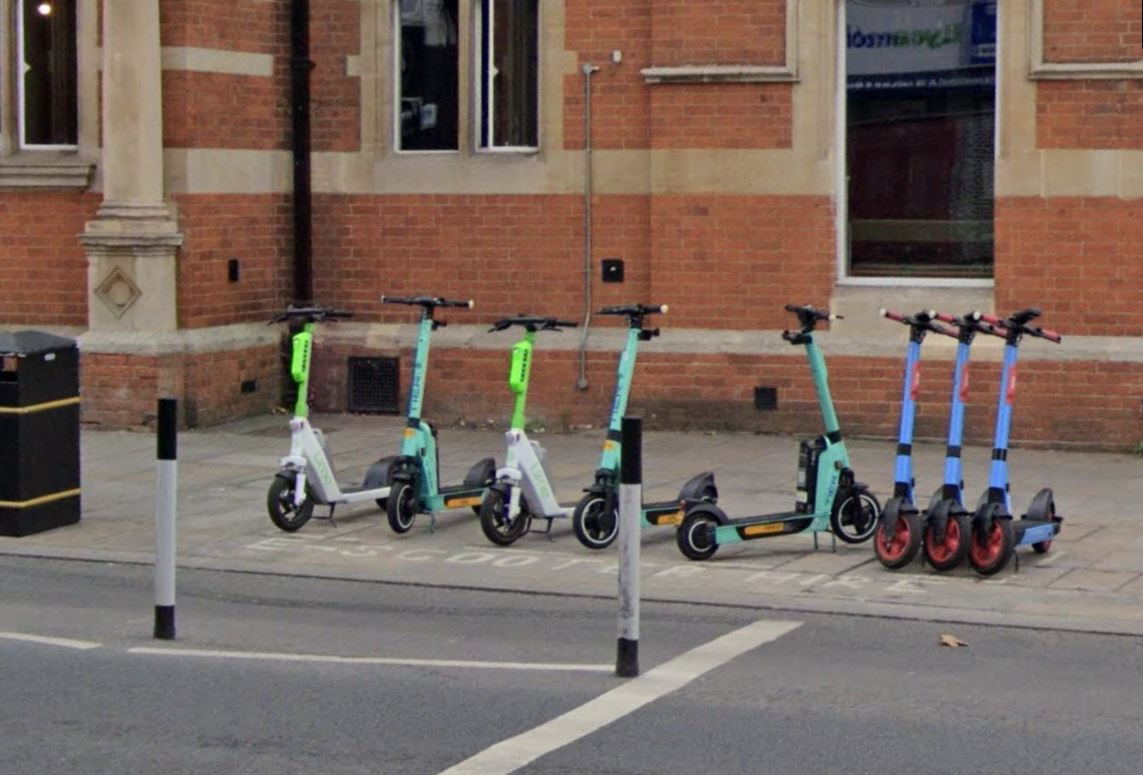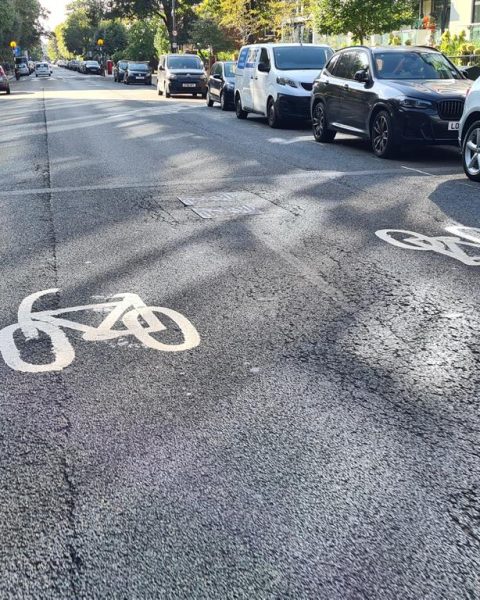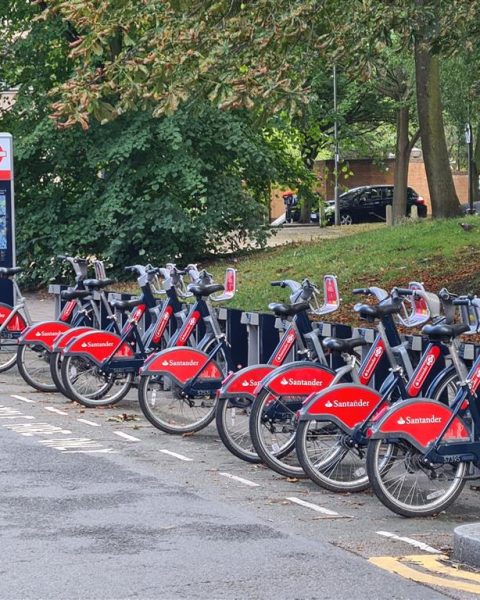After nearly a decade of e-scooter usage, including five years of experiencing the largest e-scooter rental scheme in Europe, Paris concluded that it had become too chaotic. As a result, they banned rentals, allowing only privately owned electric scooters. The French capital might be a precursor, but there are still millions, dozens of millions, hundreds of millions of e-scooter users around the globe. Singapore started its e-scooter rental scheme in 2016, 2017 in California, 2018 in Paris, 2019 in Germany, and it has since spread across Belgium, the Netherlands, the entire European continent, and Asia, among others.
London is the capital of an old country, and it aspires to be treated differently. First and foremost, they respect traditions (in Parliament, they call each other Right Honourable, even if they absolutely abhor their opponent). Using a private e-scooter is still illegal, except on private land. And why is that? Because the UK government categorises electric scooters as “carriages”, which are not permitted on pavements due to a nearly 200 years old law (section 72, Highways Act 1835 to be precise), and neither on roads as they don’t meet the necessary requirement, including having at least 3 wheels (registration with DVLA, insurance and so on). But so far they refrain to amend the law (some people call it conservatism).
In June 2021, the British city decided to finally allow e-scooters on its roads, but only for people older than 18 and having a driving licence, and only through private renting operators (Dott, Lime, Tier) – all the other e-scooters are still similar to “carriages”. The trial was launched in five London boroughs including Ealing, Hammersmith & Fulham, Kensington & Chelsea, Richmond Upon Thames, and Tower Hamlets. The City of London, Southwark and Lambeth joined the trial in July and Westminster was added in August 2021.
Therefore, if you want to use an environmentally friendly small electric vehicle, you have to pay money to a private company for the privilege because they received exemptions to those rules: punitive ecology seems to be the norm in London (do you remember that the Congestion charge was originally meant to reduce the number of vehicles in central London? And no, we won’t talk about ULEZ, you can read it hear).
NB: Although all surrounding boroughs North, East and West take part in the trial, Wandsworth has never agreed to join. Wandsworth Council has announced this week its intention to join the London e-scooter trial (see at the bottom of the article for the latest update).
No rules, but plenty of hypocrisy
To be honest, there is a high tolerance for e-scooters and it is now quite common to see privately-owned e-scooters on London roads.
However, since there is no regulation, you often see very powerful engines that can be associated with moped and capable of going much faster than the norm of 15 mph (the Nanrobot LS7+ Electric Scooter that you sometime see on roads in Wandsworth borough cost about £3000 and can reach 70-110 km/h). It is also legal to own, buy and sell e-scooters in the main street, but officially you are only supposed to use them in your garden (somewhat similar to allowing the sale of cocaine in official shops while using it being illegal).
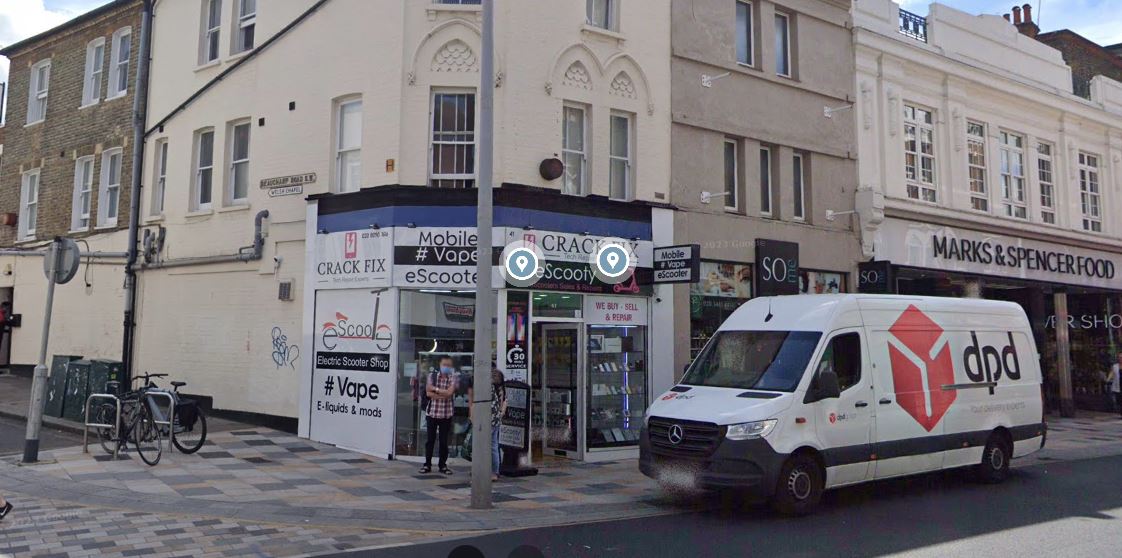
In the rare occasions where police forces would seize e-scooters, they are required to take them to their vehicle recovery units (Charlton or Perivale in London), where owners can retrieve (so they say!) their e-scooters for a fee (the Met charges £150 plus £10 for every day, which becomes in just a few days the cost of a brand new scooter actually!). However, it appears that they require the owner to provide proof of insurance to release the e-scooter (because they are motor vehicles and considered as cars as we saw above), and… that insurance is impossible to get as it simply does not exist in the UK. Therefore, in reality, they are likely to destroy all e-scooters they seize.
Illegal to use and also forbidden to just carry on all the public transport network
Transport for London banned private e-scooters from Tubes and buses at the end of 2021 after one caught fire when a District line train arrived at Parsons Green Tube station (actually overground, in Fulham). It was apparently only the second incident for TfL, an other similar device held by them in lost property caught fire 2 months before.
While the issue of e-scooter batteries catching fire should be taken seriously, it must be noted that in the case of the Parsons Green incident that led the blanket ban in 2021, and while they claimed that the e-scooter battery caught fire in a packed tube, it was also admitted that no one was seriously injured and only one passenger did suffer from smoke inhalation.
In June 2023 it became also illegal to carry them on trains (i.e. while it is illegal to use them, carrying them without using them is also illegal on all public transport systems in the capital nowadays). In a completely illogical twist, it is not forbidden to carry batteries, as long as they are separated from the e-scooter (which seems to be still banned without battery anyway!).
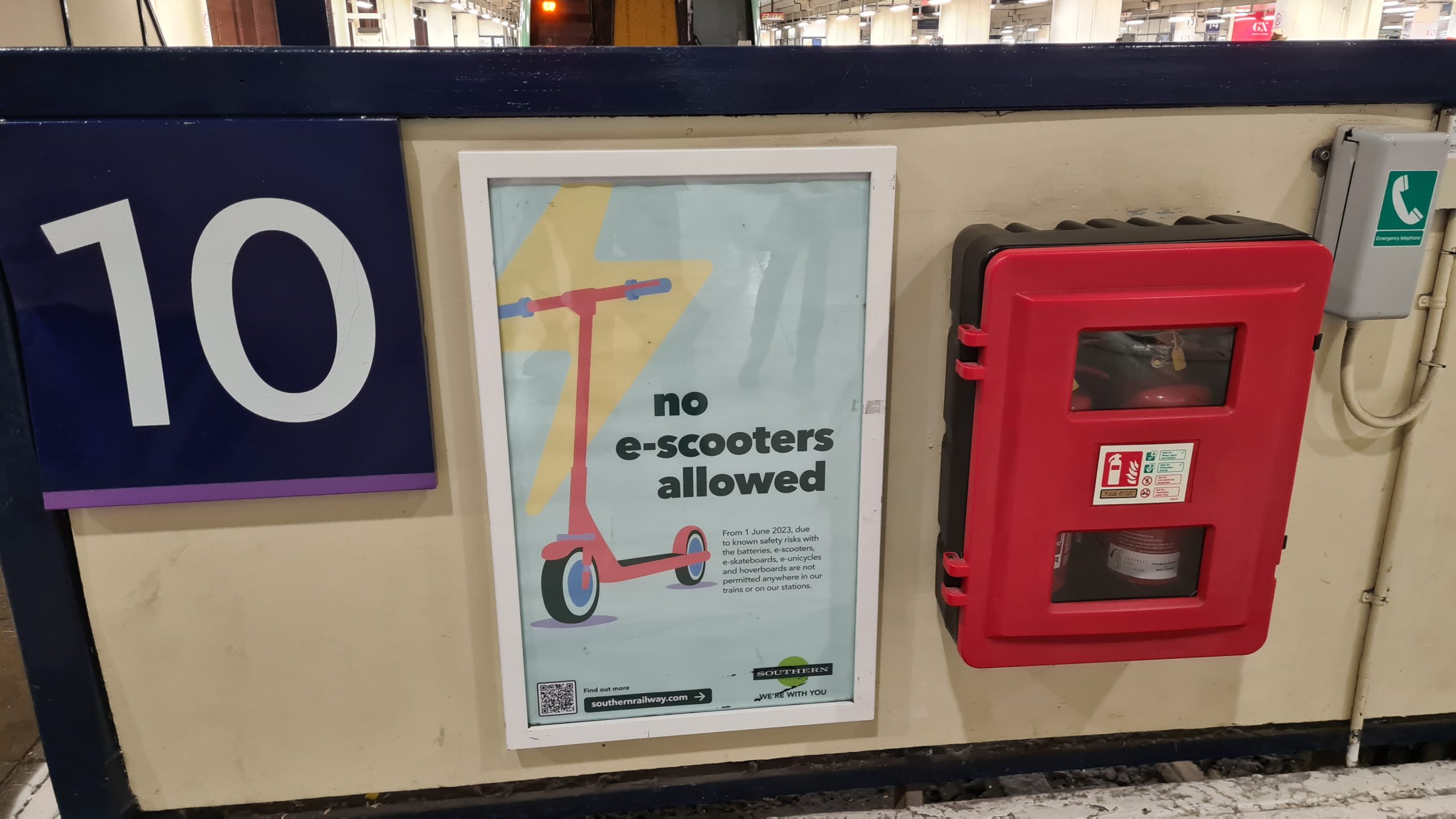
TfL banned e-scooters because of batteries, without understanding what is a battery
TfL arguments for not banning e-bikes is that they are generally subject to better manufacturing standards with batteries positioned in a place where they are less likely to suffer damage. However many electric scooters have very high quality standards while you will find plenty of DIY videos to transform your bike with electric kits bought on AliExpress.
A blanket ban on e-scooters due to battery concerns shows a total lack of rationality and an ignorance of what is inside a battery: those batteries are exactly similar to the one you can find on ebikes (and recent events have shown that they can also catch fire spontaneously, see below).



In fact, even an electric car battery is typically made up of thousands of similar rechargeable lithium-ion cells connected together to form the battery pack.
One of the current surge of concerns regarding battery safety is due to a campaign which started last spring, organised by the London Fire brigades and called #ChargeSafe. According to the International Fire and Safety Journal, the Brigade has attended over 158 e-bike and e-scooter fires from the start of 2022 to March 2023, resulting in 78 injuries and some fatalities. However, unlike politicians and local authorities, firemen seem to understand the similarity between electric batteries as they classify e-scooters and e-bikes in the same category.
🚨E-bike and e-scooter fires are London's 𝐟𝐚𝐬𝐭𝐞𝐬𝐭-𝐠𝐫𝐨𝐰𝐢𝐧𝐠 fire trend🚨
We've already tackled 𝟏𝟐𝟑 fires so far this year – that's more than the whole of 2022 🔥
Read our latest press release and why we're urging people to #ChargeSafe⚡️
👉https://t.co/TItmp75VbW pic.twitter.com/SAvxA7j87k
— London Fire Brigade (@LondonFire) September 1, 2023
The Brigade’s primary worries revolve around defective third-party batteries, as numerous incidents attended by firefighters involve batteries acquired from online sources that do not meet the necessary safety standards. The Brigade’s Assistant Commissioner for Fire Safety, Paul Jennings, said:
“We have growing concerns about the safety of e-scooters and e-bikes due to the amount of fires we are seeing involving them, so we fully support TfL’s ban of private e-scooters on public transport.”
The campaign against the danger of e-scooters has been massively relayed by the Evening Standards and other newspapers as it produces spectacular videos of e-scooters bursts onto flames.
As experts explain, fires caused by lithium batteries are going to happen more often as the use of electric motors spreads. Explosions are often due to the quality of the components. An investigation by the English association Electrical Safety First with the Guardian, reveals the proliferation of cheap chargers and batteries on sites like Amazon, eBay, or Wish that do not comply with national safety standards. London firefighters advise using only original and approved accessories.
On the other side of the Channel, similar accidents have been observed with the multiplication of these electric devices (for instance Le Parisien reported that on May 6 2023, the 11th floor of a building in the 20th arrondissement of Paris caught fire after an explosion in an apartment) but nobody is considering banning them.
It’s difficult to understand this deep aversion to e-scooters. They are widely used all over the world and do not cause such a reaction every time an incident occurs. Every day, people are injured or killed by cars, but vehicles have never been banned. When it was reported that some mobile phone batteries were catching fire a few years ago, nobody thought they would ban all mobile phones. Just a few days ago, a Tesla car caught fire spontaneously and firefighters had to extinguish the fire for thirty minutes before it was brought under control. Following the logic applied to e-scooters, are we now expecting London to ban all electric cars in the next few weeks?
E-scooters much safer to ride than bikes or e-bikes?
RoSPA (The Royal Society for the Prevention of Accidents), a premier accident prevention charity, collaborated with a e-scooter rental company called Neuron and released a study in April 2022 showing that e-scooters compare favourably to other kinds of vehicles and do not represent any greater safety risk to other road users and pedestrians:
“e-scooter collision rates were significantly lower than bicycles, with only 0.66 incidents recorded per million miles travelled – bicycles were five times more likely to be involved in a crash, while motorcycles were nine times more likely.”
In June 2023, TfL publishes new data on London’s e-scooter rental trial based on the first 18 months of the trial, saying:
“Fewer than 0.01 per cent of trips resulted in serious injury. There have been no fatalities and 22 serious injuries reported by operators.”
The Department for Transport published statistics with the number of road casualties in Great Britain involving e-scooters: 11 e-scooter users were killed, and 1 pedestrian was killed by an e-scooter in 2022. 421 people were injured seriously including 339 drivers of the e-scooters and 60 pedestrians hit. 767 e-scooters were slightly injured and 173 pedestrians.
In France, e-scooters have been allowed for private ownership or rental for many years across the country. The Guardian claimed that in 2021 “about 900,000 e-scooters were bought for personal use – making it the biggest market in Europe“. In 2020 studies (Baromètre 2020 FP2M/Smart Mobility Lab) estimated that more than 2 million people were using e-scooters regularly. In comparison in 2020, it was estimated that 750,000 e-scooters were in use in the UK, with the Bicycle Association suggesting that as many as 360,000 were purchased for private use in 2020 alone (legal to purchase but still illegal to use, see above!).
Therefore data can be much more representative in France. Figures show that 391 pedestrians have been killed in 2020 (figures published in 2021 show that over 300 killed in cities, 56% were hit by a car). In cities, the results are exactly similar to the ones observed in London, as a 2020 report published by Observatoire National de la Sécurité Routière says:
“The number of users killed by electric scooter or other motorized personal mobility device (incl e-scooters, hoverboards…etc) is stable in 2020, but the number of injuries increases by 40%, also reflecting an increase in practice from the first decontamination. This number is still 5 times lower than the number of bicycle injuries in urban areas.”

Another graphic show that in France from 2015 to 2020 no pedestrians was killed on the pavement after an accident involving a bike or an e-scooter. We observe that e-scooters and bikes are mainly dangerous for people who ride them while cars are mainly dangerous for everyone else.
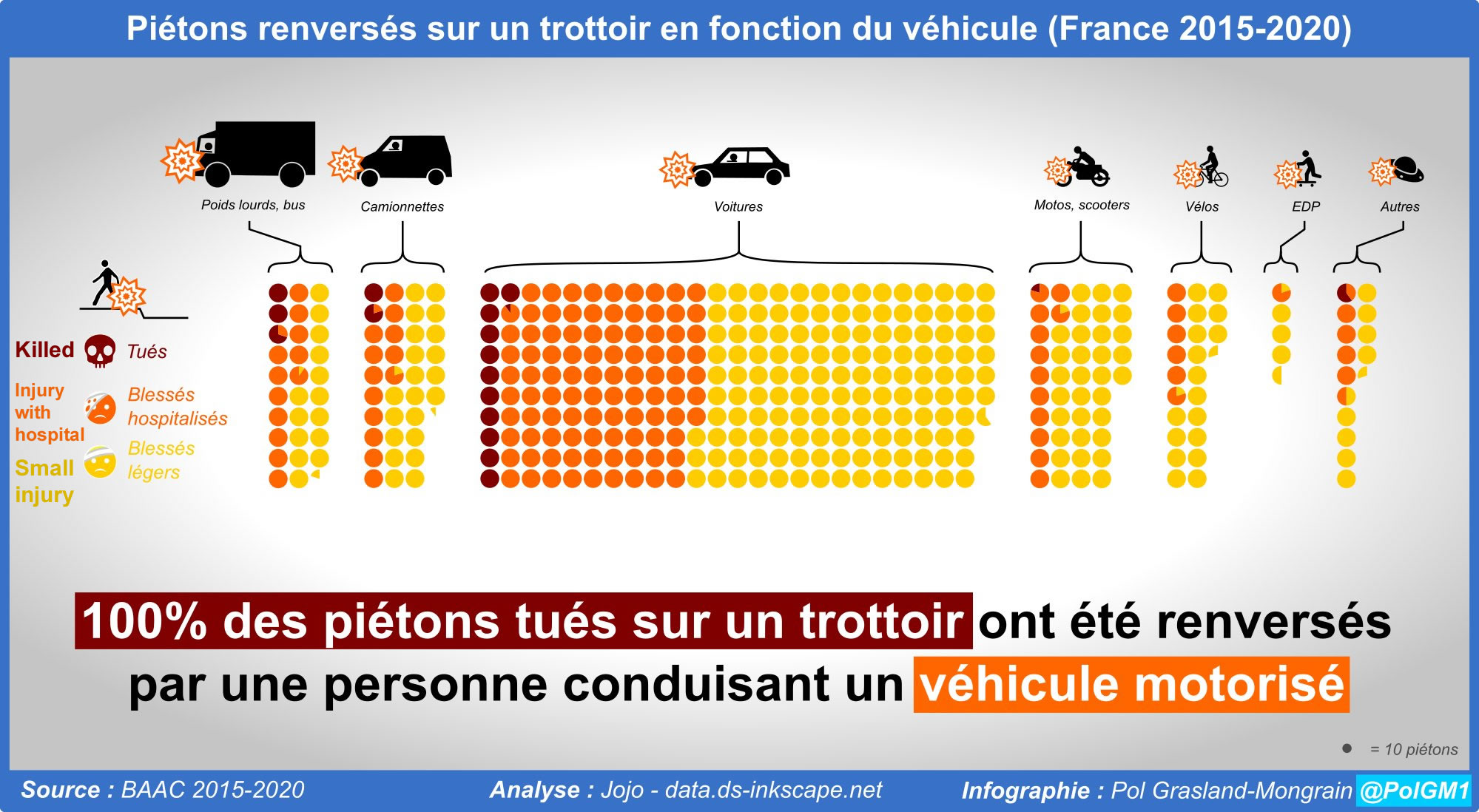
However, in 2021, for the first time a pedestrian (an Italian tourist) was hit by an e-scooter in Paris and died, which means that now it equals the number in London!
A US study concluded that 80% of e-scooter accidents are caused by falls while riding them, 11% involve collisions and 9% involve motor vehicle collisions.
In conclusion what can explain the difference between France and Great Britain? How can we have a total of 234 pedestrians injured or killed in the UK by e-scooters while you have only about double the number of injuries in France, but with 5 or 6 times more e-scooters? The main answer may lie in infrastructure. When e-scooters can utilize dedicated bike lanes within a well-established, protected network, statistics show that the incidence of injuries significantly decreases.
To illustrate this, in 2022, France documented 2,870 killed or seriously injured (KSI) bike riders, whereas Great Britain registered nearly 55% more cases at 4,399 KSI incidents. It shows that it is currently nearly twice as dangerous to cycle in the UK as it is in France.
The greater the efforts made to safeguard cyclists and promote the use of low-speed mobility options, including e-scooters, the more likely people will embrace and use them safely.
The real problem with e-scooters
In fact, the real problem attributed to e-scooters seems to be the anarchy caused by either rental e-scooters cluttering the pavements or by uncivil behavior. The illegal status of the vehicles does not help, as there is an absence of regulation due to the ban, but obviously, there is a tolerance for use, causing the issue.
Paris was the first city in Europe to open up to the “free-floating” shared electric scooter market in 2018. However it quickly became unmanageable and jungle law ruled the rental e-scooters in Paris. At some point they had 12 different companies offering the service (including Lime, Bird, Bolt, Wind, Tier, Flash, Hive, Voi, Dott and Jump set up by Uber), which was more than the entire US. They were operation 30,000 e-scooters at the start of 2019, they were expecting to have 40,000 by the end of the year.
Two years later, the local authority decided to implement very strict regulation: Reducing the operator count to three (Lime, Dott and Tier) with 5000 e-scooters max for each in Paris, implementing automatic speed tracking and limitation to 20km/h (10km/h in specific zones), and designating parking areas (in addition to the obligation to park inside designated parking spaces, Tier made mandatory to take a picture of e-scooter to validate it was correctly parked, otherwise you could be charged; however Dott and Lime never bothered about this rule).
Alas, anarchy continued and it was still common to find rental e-scooters lying on the pavement (I even found one parked in front of the bedroom ground floor window, inside the internal courtyard of the building where I was staying at some point!). In addition, there were growing ecological concerns about the very short lifespan of these vehicles and their detrimental environmental impact overall. After a local referendum organised by the city, Paris decided to ban all rental e-scooters in town from September 2023. Only private-owned electric scooters are still permitted nowadays, because they are not parked on the pavements (and actually if you leave them unattended, you avec 99.9% chance not see them stolen), and it seems that riders are more concerned about using them properly. This is the exact opposite of the current choice made by the DfT!
However, similar problems are occurring in London. Westminster took action last year to address the problems caused by e-scooters clogging up the borough’s pavements. In a crackdown operation, the local authority decided to confiscate all the abandoned rental e-scooters that were littering the pavements and creating trip hazards. In September 2023, they also announced their plans to create 220 e-bike and e-scooter parking bays.
Wandsworth is following Westminster and announced this week that they will provide bays in an attempt to stop dockless hire bikes blocking pavements and creating hazards for pedestrians.
Jenny Yates, Wandsworth’s Cabinet Member for Transport said:
“Our scheme will seek to remove these pavement obstructions by working in partnership with the bike hire companies to ensure their bikes are parked in mandatory bays in town centres and busy areas, meeting the needs of riders whilst not disadvantaging others, particularly pedestrians.”
The council has already identified more than 100 locations where hire bikes could be parked without causing obstruction. The use of these spaces will now be the subject of local consultation.
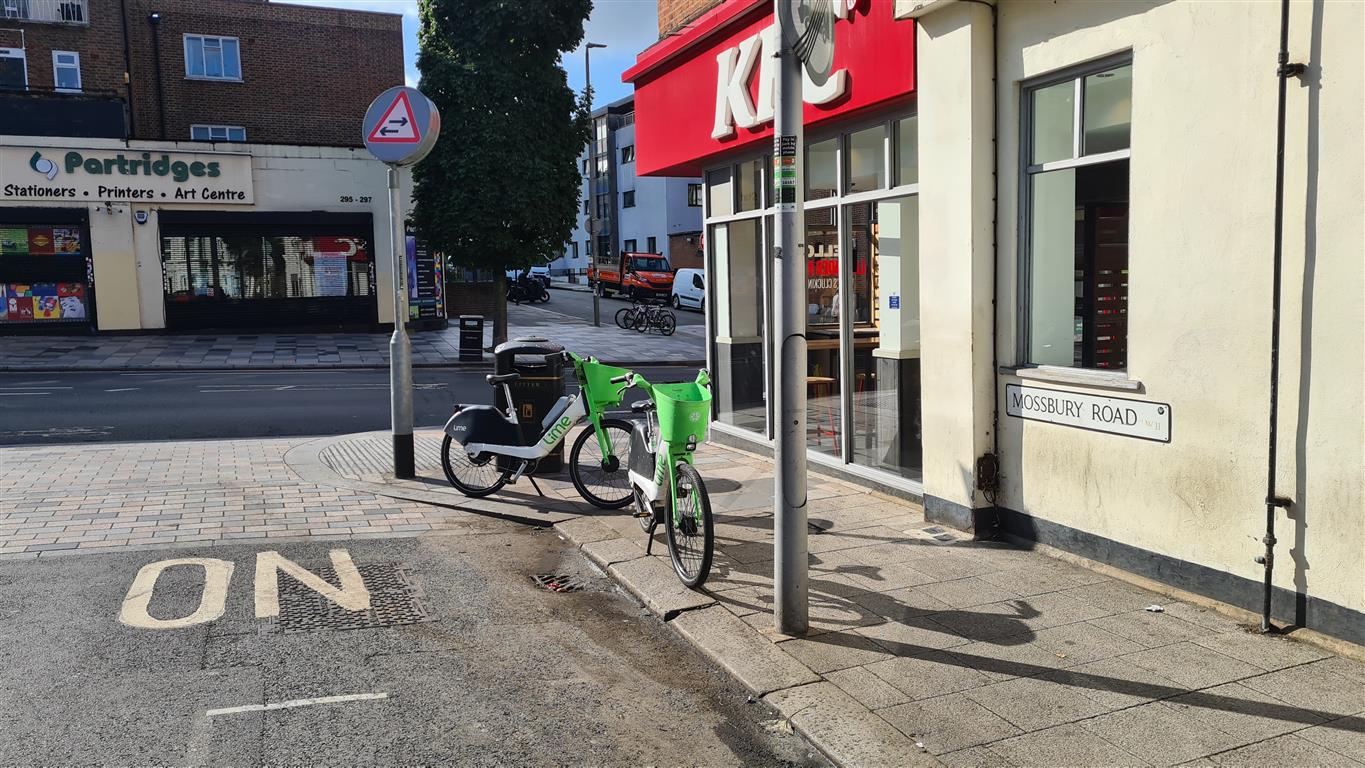
It’s indeed disappointing that London, despite being one of the last major capitals to introduce e-scooters, does not seem to be leveraging the experience gained by other cities, especially when major neighboring cities, such as Paris just across the Channel, have been at the forefront of the e-scooter experience. Instead, it appears that London is encountering issues without willing to take any advantage of the lessons learned elsewhere.
Andrew MacMillan, chair of Wandsworth Living Streets said:
“London is so much behind other countries”.
The way forward
To avoid cluttering pavements, there is a simple solution: implementing a system similar to the Santander bikes, with fixed attachment points. This is what has been implemented in Bucharest (it’s a shame they did not consider it in Paris and preferred to ban rental e-scooters entirely).
A Bucarest ils ont trouvé la solution : le Vélib local (i'vélo) propose aussi des trottinettes électriques et les stations sont adaptées aux deux pic.twitter.com/RoYteIAWJa
— Corentin (@CorentinSrfc) October 4, 2022
Another key point is to implement a set of rules for the usage of e-scooters (and by extension e-skateboards, e-unicycles, and hoverboards), such as mandatory usage of cycle lanes, speed limits, and lights to regulate what is currently free-style.
In December 2021, PACTS (Parliamentary Advisory Council for Transport Safety) wrote to the Government offering recommendations on how to safely regulate private e-scooters. This included introducing requirements on maximum speed, design, and rider behaviour, such as mandatory helmet wearing. However, some of their recommandations are very awkward, for example “Minimum front wheel size of 12 inches (30.5cm)” which means that nearly all of the current standard e-scooters are not complying. On the other hand, they don’t mention a mandatory insurance that would be useful.
And last but not least (and probably way more important), valid for bikes as well: drastically improve the cycle lane networks with segregated lanes, protected junctions, dedicated lanes that are not just a faint band of paint on the road used by lorries, double-deck buses and SUVs (we will talk about the cycling network in London in a different article).
The initial “trial” scheme in 2020 was meant to last for 1 year. But Department for Transport, ignoring the experience of the rest of the world and the millions of users in other countries decided it was not enough to decide. They extended the trial, and extended it again, and again. Even the Isle of Man and Gibraltar, which traditionally follow the DfT, have decided that they have waited long enough.
The Government has announced plans to fully legalise the use of e-scooters as part of a new Transport Bill in 2024. To consider the likelihood of that contentious topic to happen, just remember that 2024 is also the year of the next General Election in the UK!
Latest update for Wandsworth Council (23/09/2023):
In a press release published on Friday 23 September, Wandsworth announced its readiness to join the London e-scooter trial which has been approved by the Department for Transport (DfT) since 2021 and is set to run until May 2024. Some may consider it better than nothing, but it’s worth noting that this trial has been ongoing in other boroughs for the last 3 years, has already been extended, and is slated to conclude in less than a year (at least if one trusts the government).
However, it’s unlikely that we’ll see many rental electric scooters before the end of the year. This is because it is still subject to contractual agreements with Transport for London and the e-scooter hire companies, and users would be required to adhere to the same mandatory parking arrangements as bike riders.
Update 24/09/2023: Mention added regarding the police seizing e-scooters and added a link with an excellent video on the necessity of infrastructure.
Update 02/10/2023: Find just here another video of Electroheads (disclaimer: this is an online store specialised in e-mobility, e-scooters and e-bikes) with examples of legislation in Spain, Austria, France (with more information about France on that other video from the same channel – note that unlike what the video says, it is mandatory in France to ride the e-scooter on the bike lane when there is one), Norway and Singapore. And in comments under a video here, someone explains that “in Sweden they’ve kept it fairly simple. As long as the scooter rides at 20km/h and a power at 250W it counts as a normal bike while if it doesn’t reach any of those it counts as a electric moped and then there’s other requirements for reflexes, lights and brakes“; another says: “In Belgium it’s covered by the Family insurance; which is the same insurance that covers damages to third parties for you and your family. Damages such as breaking a glass window of your neighbor with a football, or colliding with a parked car on your bike. Typically small damages. It also covers electric scooters, hoverboards, mono wheels, etc.. even drones up to 1kg“.


